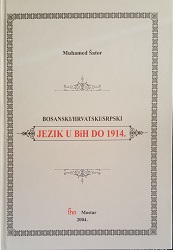
We kindly inform you that, as long as the subject affiliation of our 300.000+ articles is in progress, you might get unsufficient or no results on your third level or second level search. In this case, please broaden your search criteria.

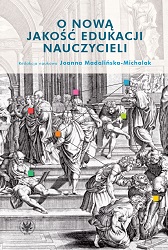
The book discusses relations between pedagogy as a scientific discipline and education as a specific type of social practice, the issues related to education of teachers, their preparation for a job, and further professional development, as well as key issues regarding teacher education: integration of the pedagogical theories with educational practice, key values in educating teachers, inspirations and prospects for this professional group.
More...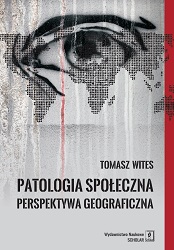
Praca jest swoistym kompendium wiedzy na temat istoty i badań zjawisk określanych mianem patologii społecznych. (…) Stanowi cenną pozycję w polskim piśmiennictwie geograficznym. Autor ujmuje problem patologii społecznej w sposób szeroki i wyczerpujący. Podejmuje próbę nie tylko zestawienia różnych perspektyw i ujęć badawczych, lecz także uporządkowania tego rozległego materiału.dr hab. Iwona Sagan, prof. UGKsiążka Tomasza Witesa wprowadza nowy wymiar teoretyczny i w tym sensie jest oryginalna i wnosi istotne wartości do rozwoju geografii. (…) Podjęty w niej problem patologii społecznej ma istotne znaczenie dla teorii i metodologii geografii, ma także znaczenie praktyczne. Autor postanowił osadzić problem zarówno w ujęciach obecnie już historycznych, jak i współcześnie dominujących.dr hab. Stanisław Mordwa, prof. UŁ Tomasz Wites – geograf, pracownik Wydziału Geografii i Studiów Regionalnych Uniwersytetu Warszawskiego, sekretarz Zarządu Głównego Polskiego Towarzystwa Geograficznego. Specjalizuje się w geografii człowieka. Autor książki Wyludnianie Syberii i rosyjskiego Dalekiego Wschodu (2007), stypendysta tygodnika „Polityka”, Fundacji na Rzecz Nauki Polskiej, laureat wielu innych nagród.
More...
The author presents the image of a modern father - present in the child's life and involved in his upbringing. The book contains a comprehensive discussion of the topic, from the theoretical description of family history, through the psychological approach to parental behavior, to the presentation of the author's typology of fatherly attitudes. The author describes and analyzes paternal attitudes in the Polish rural environment on the example of the Płock poviat. The issues raised are also presented from the perspective of the respondents themselves, analyzing their perception of the role of the father and the feelings associated with her, as well as the factors conditioning the participation of men in childcare.
More...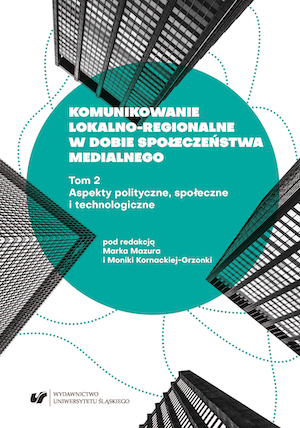
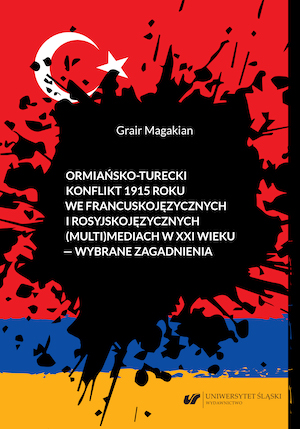
The monograph aims to discuss the Armenian-Turkish relations in the media discourse of the 21st century, predominantly on the basis of French and Russian-speaking mass media on the Internet, with particular emphasis on cognitive analysis of media materials and their influence on exacerbating or alleviating the Armenian-Turkish conflict.The Armenian-Turkish conflict, triggered by the Armenian genocide in the Ottoman Empire and lasting for more than 100 years, has been widely discussed in media coverage, including on the Internet. Most of the research material therefore comes mainly from the Internet and includes online editions of paper publications, including traditional periodicals, digitalized official publications, blogs, forums, and even Wikipedia. The choice of the research material is motivated by approaching the subject via the analysis of information transmitted in any direction, in any medium, and in any form to any recipient, because an undefined recipient (i.e. everyone) often seeks out and retains information without paying attention to its source.The above approach has also conditioned the research timeframe, which covers the first and partly the second decade of the 21st century (with the origins of the conflict in the beginning of the 20th century briefly sketched out for context). The choice of languages, on the other hand, was dictated both by the fact that the Russian and Frenchspeaking media practically “accompanied” this conflict from the first moment onward, as well as by the fact that the former reflects its Eastern and the latter its Western perception.The present study constitutes the first foray into the topic and is an essential part of understanding and improving the processes taking place in French and Russianspeaking media discourses, among other things: 1) critical analysis of the abovementioned discourses, 2) influence of the media on the processes occurring in the perception of discursive information at the level of consciousness and subconsciousness of the recipients, 3) attempts to distinguish discursive fact and falsehood from the perspective of cognitive analysis of discourse models, 4) the paradigm of truthfulness of discourse at the level of its compatibility with reality.The examples analyzed in the book in both languages are identical or at least relatively substantially similar, taking into account the perceptual characteristics of both French and Russian.The monograph presents the theoretical foundations of the research (in particular, the philosophical and socio-psychological framework), introduction to the theory of discourse (the social functions of language, the place of information in cultural and relation-forming discourse, the critical analysis of discourse, the directions of research and discourse analysis) and the channels of information flow, along with their cognitive analysis (issues related to, among other things, the specificity of the language of the media, the illocutionary structure of discourse, and the categorization of discourse are taken into account).A fundamental place in the study is occupied by the matter of the semantic structure of the so-called plexuses (as components of cognitive analysis), which, derived from K. Popper’s paradigm of worlds, create discursive space and space for empirical translation (or materialization) of discourse. In addition, the monograph covers issues related to the normative meaning of discourse in correlation with national ideology and the analysis of manipulative discourse tactics. It also presents the influence of socio-political and economic factors on the linguistic structure of discourse.Moreover, the research presented in the monograph includes the influence of the noun genocide (from Greek genos – genus, genealogy, origin, and Latin cide, from caedere – to kill, to massacre) on its subliminal reception by the participants of the discourse, as well as ethnocultural stereotypes and the specificity of the sociolinguistic analysis of the ideological propaganda war. It is worth noting that the social interaction of the understanding of genocide in Armenian-Turkish relations was also taken into account in the study.The conclusion is that the discourse includes a number of clearly separated semantic codes, which in this case can be divided into historical-patriotic, legal-judicial, religiousspiritual, visionary-analytical, economic, critical-oppositional, state and raison d’etat, civilizational-European vs. barbarian-Asian, and national superiority.
More...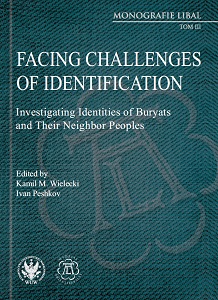
The volume discusses the dynamically changing identities among Buryats and other nations of Eastern Siberia and Inner Asia. The wide range of articles has been organized into three clusters – Ethnicity and Nation-Building Processes, Buddhist Identities, and Landscape and Indigenization. Some of the papers present anthropological empirical research of particular groups, while other adopt a perspective of literary or ecological studies. Constituting an interdisciplinary endeavor, the volume tries thus to link the diverse phenomena under investigation and different research methodologies, and to show them in a wider context of historical and transnational processes. Lastly, it aims at bringing new theoretical perspectives to studies of nations and peoples of broadly understood Inner Asia.
More...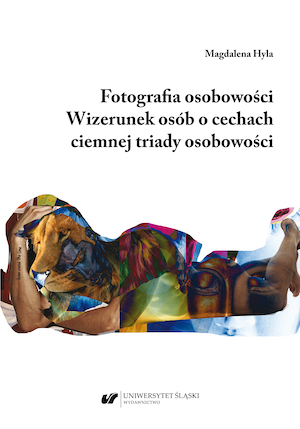
This publication constitutes the result of reflection and research on the connections between people’s “dark” personality traits and their preference for self-presentation in photographs as well as how they are perceived based on photographs. The book includes a review of the literature on the dark triad of personality (psychopathy, Machiavellianism, and narcissism) and image in the context of self-presentation and perception of others, including perception on the basis of photographs, and features a description of the conducted research. It is addressed to those interested in the topics of self-presentation, the dark triad of personality, and psychological research using photography as a medium.
More...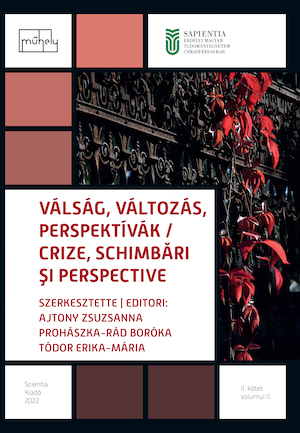

The subject of the theoretical considerations and empirical analysis of this dissertation are the environmental and subjective factors contributing to adolescents’ anti-social behaviour (behaviour breaking social rules and the law). The revealed tendency to aggressive behaviour has a key role in diagnosing the correlations between the sense of strain, demonstrated level of anxiety and aggression and delinquent behaviour. The theoretical basis for this research were the assumptions of Robert Agnew’s General Strain Theory (1992). The main aim of this work was to explore the existing correlation between variables in the scope of the strain (its types), limiting factors (social control, differential associations) and subjective variables (aggressiveness and anxiety) and illegal and anti-social behaviours demonstrated by the analysed adolescents from rehabilitation centres and high school students’ anti-social behaviour.
More...
The first out of five parts that comprise Homosexuality and Polish Modernity.Sketches on Theory, History, and Literature, presents theoretical and methodologicalissues. Articles in this part provide the quintessence of discussions onthe history of sexuality, methodology (constructionism vs. essentialism), thestatus of psychoanalysis, as well as their relations with the queer theory. Themost important postulate that comes as the aftermath of these disputes is thequestion of extending local knowledge. The reception of international studieshas always been uncritical, the result of which was the acquisition of cognitiveschemata that are not necessarily adequate in the context of Polish studies. Oneof these schemata might be the assumption that the category of the homosexualemerges in Polish society and culture according to the same models (defined byMichel Foucault) as it happened in Western Europe. This may, however, lead tothe neglect of the fact that description done by Foucault is not the only possibleone. Furthermore, Foucault himself regarded it as a mere sketch which needsto be specified more precisely. Regardless of the extent to which we considerFoucault’s ideas expressed in The Will to Knowledge as final, we cannot, however,make it part of our everyday life. Therefore, to propose a Polish version of the“history of sexuality” is a burning issue. Otherwise, when undone, it will fail todepict a significant part of our cultural self-knowledge.I satisfy my desire to write of a Polish version of the “history of sexuality”in the second part of this book. I explore the questions of the two homosexualscandals from the turn of the 19th and 20th centuries – that is, a scandal ofPhilip, Prince of Eulenburg, and a case of Oscar Wilde. Both the scandals onthe European scale, are presented in the light of Polish public opinion and thencontemporary politics. I have derived form documents form that époque, namely,the press, the general public texts, etc. The subject of the deeper reflection is therelation between a discursively constructed sexual and gender identity, andPolish national identity (then permanently threatened), which can be easily seenin the case of the scandal of Eulenburg.The subsequent parts deal solely with literature. The part entitled The Geopoeticsof Masculine Sexuality comprises three sketches, where the author analysesthe relations between space and a feeling of desire from the Interwar Period tocontemporary times. The provided analysis seems interesting, since Western Europeanas well as American studies have a tendency to create big-city enclaves offreedom and homosexual ghettos with patterns of behavior and subcultures belongingthere, whereas in the Polish agrarian tradition, such places did not evenspace in Polish culture where this non-normative desire may be able to manifestitself, and in what way this space has been rendered in literature.The fourth part of this book focuses on the personae of Jerzy Andrzejewski.His book, Ashes and Diamonds, has never been genuinely interpreted through theprism of gender studies. By presenting four approaches to Andrzejewski, the authormakes an attempt to do so. The author of Ashes and Diamonds, posthumouslydoomed to literary purgatory, while in his lifetime interpreted from the politicalperspective, appears as a tragic misfit, and his works are viewed as a record ofrejection, erotic obsession, and self-humiliation.The final part of the book is devoted to the homosexual personae as well asmotifs in the works of Stanisław Vincenz, Michał Choromański, Wilhelm Mach,and Krzysztof Boczkowski. Moreover, there is a sketch on the “ideology of thebody” in the literature of the Interwar Period. The books analyzed here are readrather separately; however, juxtaposed next to others, they prove that even if notall of us “have a pink tongue” (the term used by Błażej Warkocki), it is still possibleto hear it — this pink tongue — in literature more frequently than we might think.
More...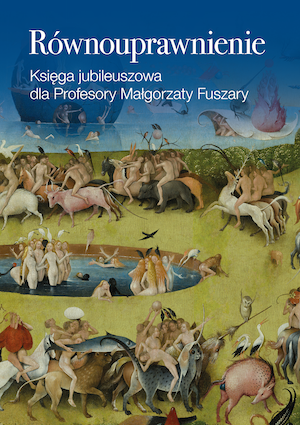
This collection of articles is an attempt to reconstruct some of the gender-equality-related themes in Professor Małgorzata Fuszara’s academic research and public activity in the context of the changes which have taken place in the feminist movement in Poland in recent decades. It is a contemporary compendium of knowledge on women’s rights, equal status, political identity, and gender studies. Not only does the book celebrate the anniversary of Professor’s scientific work, but it also presents the current state of the art in the above-mentioned fields. It shows that comprehensive, interdisciplinary and intersectional approaches, applied both in practice and in theory, must become the basis of the struggle for women’s rights.
More...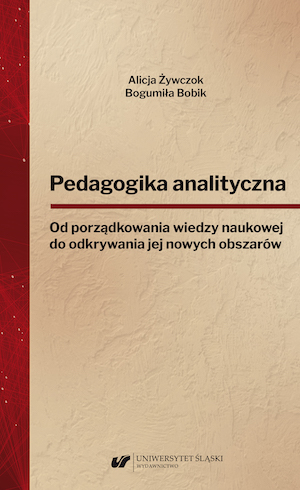
The monograph proposes viewing classification as not only a cognitive process that organizes knowledge, but also one that promotes the dynamic development of science: initiating new directions, concepts, branches of science, trends, sub-disciplines, etc. In structured knowledge it is easier to detect places yet unmarked in science. Thus the object of the presented research is the significance of ordering the scientific knowledge in the form of classification in the field of social sciences, in the discipline of pedagogy. Methodological resources of hermeneutics proved to be useful in analysis and interpretation of scientific source texts and official documents. The structure of the monograph consists of the table of contents, introduction, four chapters, conclusion, bibliography, list of diagrams and tables, personal index, summary and note about the authors.
More...
lallamiquiliztli inelhuayo is a novel in the Nahuatl language written by Crispín Martínez Rosas, an Indigenous author from a Nahua community in the Mexican state of Veracruz. Enriched with descriptions of local customs and beliefs, it immerses us in the reality of the inhabitants of a small, Native village engaged in a dispute over land with Church and government-backed paramilitary forces in the 1970s.
More...
The book presents contemporary Polish education and Polish education abroad in two parts. The first presents the current state of this type of education from several perspectives, which allows us to assess and grasp its various possibilities. It is something of a guide for discovering and navigating the current Polish educational space abroad. The second part presents the unprecedented phenomenon of broad cooperation and exchange of experiences that emerged between Polish educational circles from all over the world as a result of the pandemic. The aim of this paper is to show Polish communities from all over the world the contemporary possibilities and dynamics seen in the development of Polish education abroad. Moreover, it seeks to demonstrate how and in what way the events related to the COVID-19 pandemic resulted in the need to unite forces and act creatively in the educational space, despite the many difficulties and often dramatic consequences of that pandemic. The book is addressed to a wide range of educators, educationalists, form teachers, and parents, in fact, to all those with a particularly affinity to the value of multidirectional cooperation and involvement in the education of children and young people. The book raises awareness of the importance of Polish education abroad as a unique space that is perceived and evaluated in a special way, not only by its direct participants but also by the entire Polish expat community. This is because it creates the conditions for Polish civil society abroad to be organised in a creative way.
More...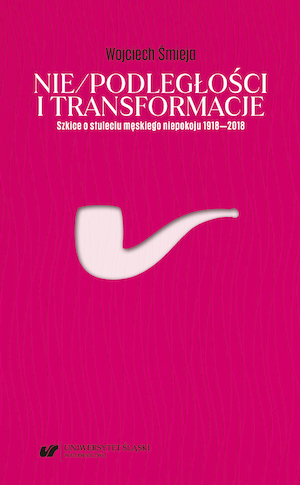
The work constitutes part of a lively current in contemporary humanities research — masculinity studies. In the theoretical chapter, the author introduces and maps the latest international research in this area. In the analytical chapters that follow, he demonstrates the possibility of using these methodologies in the area of domestic literary studies. Applying the new concepts discussed in the introduction to the analysis of literary texts enables the author to demonstrate the unconscious and often difficult-to-express tension that the unstable limitation of gender categories — not necessarily related to our “here and now,” but, as it turns out, quite common and transhistorical — introduces in the discussed texts. The analyses of selected works expose the tensions that are at first glance invisible, unnamed, but fundamental, thus opening up the field of further inquiry for subsequent researchers. All the discussed plots demonstrate how changes in political, social, cultural and economic conditions have modified the definition of what is “masculine” or “non-masculine,” and how the characters have confronted these changes, sometimes attempting adaptation, at other times contestation. Between the lines of these texts one can find uncertainty, anxiety and a desire to establish an (imagined) ontological foundation for the male gender, which, however, is lacking in the secularizing, fluid reality. Moreover, almost every one of these changes resonates in the male bodies.
More...
Sports betting combines the typical attributes of gambling with sporting events. Sports bettors put money on a particular result of a football match, boxing fight or horse race. Unlike roulette, craps or the lottery, however, they are faced with a situation where a very large number of factors determine the game’s outcome. The practice of sports betting is thus a laboratory of processes related to risk and decision-making, but also the analysis of the social world, the attribution of meanings to activities or the adherence to a specific worldview. This book aims to answer the question of how bettors engage in sports betting – why they perceive it to be attractive to them, what betting is for them, and how they know how to bet or how they actually do so. The book tries not only to describe the social phenomenon of betting but also to place it within a broader cultural context. To do so, it uses theories of social practices. This group of concepts makes it possible to see in the actions of individuals both the influence they are subject to and the influence they exert on culture, lifestyles or technology. Using such a framework has made it possible to bring out the complexity of sports betting and to discern connections with other areas of social life.
More...
The presented volume is the author’s proposal of a sociological description of the phenomenon of co-production of social services as a source of personal and social productivity of older people. The main conceptual axis of the study, which defines its cognitive goal, is an attempt to link the idea of co-production of social services with the productivity of older people, indicating the potential relations occurring between these phenomena. According to the author’s knowledge, both in Poland and abroad, no analyses in this area have been conducted so far, not only within sociology, but also within other sciences. Therefore, the theoretical aim of the study was to describe and rank the concepts constituting the backbone and filling in the presented theoretical perspective, such as co-production, personal and social productivity of the older persons, social services, human capital and social capital. The conceptual analysis carried out resulted in the development of the author’s operational framework for the services organised and provided under the “Senior+” Multiannual Programme, showing how co-production of older people, based on the use of their human and social capital, generates their personal and social productivity. Therefore, it can be considered that the publication is a direct response to the persistent deficit of comprehensive studies in this area in the Polish scientific space.
More...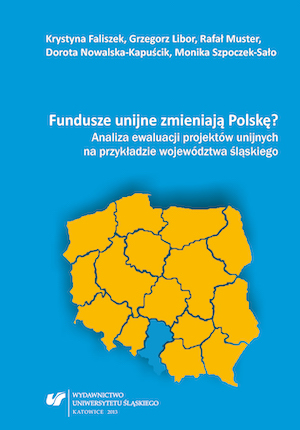
The volume mainly concentrates on presenting the issues connected with conductingevaluative studies from the practical point of view. The focus is, among other things,on practical aspects of the realization of evaluative studies of the projects financed fromthe European resources in the Silesian voivodship. The authors of the volume wanted toshow the issues concerning the realization of studies aiming at a diagnosis of the effectsof the external interference undertaken within the frame of the projects realized in theSilesian voivodship.The studies, the results of which, encouraged us to present this publication wereconducted in a qualitative way, by means of a questionnaire containing dispositions toquestions in over ninety districts and counties of the Silesian voivodship. Thanks to it,the material gathered also allowed for some basic quantitative analyses. The questionnairegivers, the role of which was performed by our students, asked the representativesof self‑governmentinstitutions in districts and counties, responsible for the realizationof European projects in a given unit, to make information on not only the projects assuch, but above all their evaluation available. The initial questionnaire questions concernedthe project itself and its classification as regards the programme (“Human Capital”Operational Programme, Regional Operational Programme of the Silesian Voivodship,as well as a priority, action or sub‑action).The next questions concerned ways ofevaluating the project. Here the questions asked for a definition of evaluation used for thepurposes of its realization, the subjects taking part in the evaluative study, the criteria ofselecting the evaluators, aims of the evaluative study, the type of the study in terms of itssubject, aim, time, nature of evaluator, evaluative criteria, methods and techniques usedin the study, the final report as well as its structure, and, last but not least, recommendationsderiving from the evaluative report. This way, an interesting study material wasgathered, the analysis of which allowed for making a few conclusions worth presenting.The first chapter of the volume presents basic information on the usage of Europeanresources in Poland, putting an emphasis on the Silesian Voivodship. A lot of attentionwas paid to the Regional Operational Programme of the Silesian Voivodship, within thescope of which the broadest stream of European funds comes to the regions. The secondchapter, apart from raising strictly methodological issues and problems directly resultingfrom the study realization, presents a characteristic of different elements of the evaluationssuch as types of evaluations, their aims, functions, criteria and final reports, aswell as how the evaluation is really perceived, and what role it is ascribed. In the thirdchapter, on the other hand, three selected examples of the so called good evaluativepractices, namely evaluative studies that can be considered as model and worth imitatingwere described. These were the evaluations of the following projects: „Droga doprzyszłości szkół w Przystajni”, „Szansa dla Ciebie”, and „Skorzystaj z szansy”. The bookcloses with a chapter devoted to the Generator of the Application Forms of the „HumanCapital” Operational Programme, that is a programme that serves the application forEuropean resources and their obtainment.We would like our publication to become useful both for the students already startingto deepen their knowledge on evaluative studies, and practitioners who, realizingvarious programmes and projects financed (or co‑financed)by the European resources,have to know how or prepare and conduct the evaluative studies or evaluate if the evaluationconducted by external experts was realized according to the principles of researchreliability.
More...
Schmalenbach nie ma wątpliwości, że przymierze z natury jest tworem nieco efemerycznym. Stany emocjonalnego odurzenia, gotowości do poświęceń, bezgranicznego oddania mijają, zostają wygaszone, przekształcone w „zrosty” wspólnoty lub „uspołecznione” czy wplecione w ramy organizacji społeczeństwa. Labilność przymierza zwiastuje jego zagładę i wymaga szczególnego etosu, o ile nie ma być sprowadzona do niekontrolowanej eksplozji uczuć. Jest to etos lojalności, konkretyzowany jako wierność, przymierze wierności, przyjaźni czy miłości, ich przyrzeczenie czy obietnica. Zarazem jednak oznacza to zakotwiczenie w dwóch pozostałych formach związków społecznych: we wspólnocie, gdy oczekiwanie trwałości przyrzeczenia lub obietnicy staje się składnikiem wspólnotowego bytu (tradycji), i w społeczeństwie, gdy lojalność staje się składnikiem sankcjonowanego społecznie kontraktu. Dopracowanie i równouprawnienie trzech kategorii: wspólnoty, społeczeństwa i przymierza to próba przezwyciężenia ograniczeń dychotomicznego myślenia. prof. dr hab. Aleksander Manterys Herman Schmalenbach – niemiecki filozof społeczny, urodzony w 1885 roku w Breckerfeld. Był jednym z najważniejszych krytyków teorii Maksa Webera i Ferdinanda Tönniesa, znawcą myśli Leibniza i Kanta, kontynuatorem tradycji filozoficznej spod znaku Georga Simmela. Od czasu studiów związany z uniwersytetami w Berlinie, Jenie, później w Monachium, Getyndze, Hanowerze, a wreszcie w Bazylei, gdzie zmarł w 1950 roku. Dziś pamiętany przede wszystkim jako autor eseju O socjologicznej kategorii przymierza.
More...